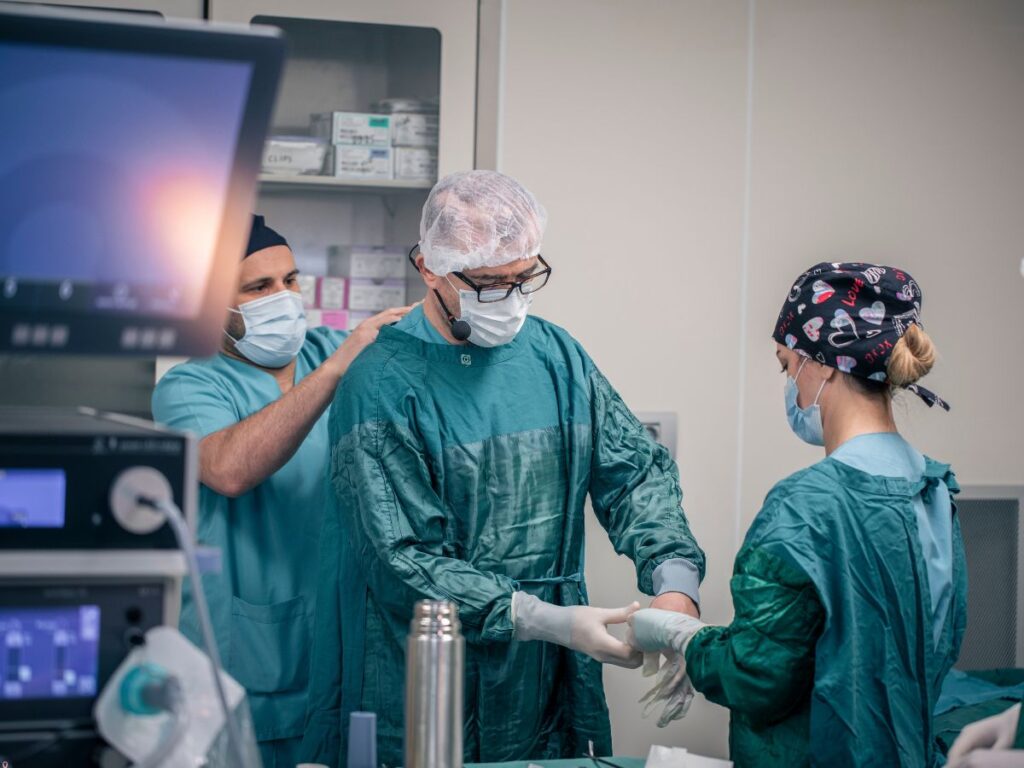Why Spine Surgery Demands Targeted Rehab
Spine surgery, whether a fusion, discectomy, or laminectomy, can drastically relieve chronic back or neck issues. Yet the operative fix alone won’t guarantee optimal function without specialized rehabilitation before and after the procedure. Pre-surgical (prehab) exercises build muscle strength, reduce stiffness, and help you learn safe movement patterns—ensuring the spine is primed for the operation. After surgery, post-surgical rehab systematically combats scar tissue, reactivates muscles weakened by inactivity, and reestablishes correct alignment. This comprehensive approach fosters quicker return to daily tasks, lowering risks of complications like re-injury or persistent pain. By pairing mindful therapy with Dr. Elham’s integrative insights, you safeguard your spine’s long-term stability and mobility.
Common Spine Surgery Roadblocks
Leading into surgery, many patients suffer from disc degeneration or nerve compression that limits physical activity, causing muscle atrophy. Pain or fear of movement can worsen posture imbalances, complicating surgical outcomes. Post-operatively, swelling, scar adhesion, and protective muscle guarding stifle normal spinal motion. Pre and post rehab break these cycles: strengthening core stabilizers before the scalpel hits, then reinforcing alignment and flexibility once incisions begin healing. Without this dual-phase approach, scar tissue can cement poor posture or leave nerve pathways partially compromised, undoing the gains of surgery.
Core Elements of Spine Rehab
While protocols vary by procedure and level (cervical vs. lumbar), rehab often entails:
- Pre-Surgery Conditioning: Targeted exercises (e.g., gentle planks, bird dogs) to develop trunk strength and ease post-op transitions.
- Pain Management Drills: Simple movements that mobilize stiff vertebrae, lessening inflammation and muscle guarding before surgery.
- Post-Op Mobility Work: Gradual range-of-motion exercises prevent scarring from freezing segments.
- Core Stabilization: Progressive planks, pelvic tilts, or bridging to support the newly corrected spinal architecture.
- Posture Training: Drills emphasizing neutral spine, teaching safe lifting or sitting as tissues heal.
In each stage, strategies are meticulously scaled to minimize undue stress, fostering safe yet effective strengthening and flexibility around a surgically altered spine.
Dr. Elham’s Integrative Approach
Dr. Elham frames spine surgery rehab within the broader context of posture, muscle coordination, and lifestyle. Pre-surgery, he may use gentle chiropractic adjustments to eliminate subluxations hampering core exercise success. After the operation, mild manipulations or manual therapies (once cleared) can release residual tension that complicates healing. By marrying spinal alignment with strengthening and soft-tissue release, Dr. Elham ensures the surgical correction stands on a stable foundation, reducing the risk of future disc or nerve issues. This synergy fast-tracks recovery, letting you return to work, exercise, or family duties with renewed confidence in your spine’s resilience.
Benefits of Pre and Post Spine Surgery Rehab
When you invest in both phases of therapy, the rewards multiply:
- Lower Pain Levels: Conditioned muscles and mindful post-op exercises ease the shock of surgery and accelerate tissue healing.
- Stronger Core Support: A fortified trunk stabilizes surgical segments, preventing micro-instabilities that strain hardware or repaired discs.
- Improved Mobility: Early motion tasks keep fascia and ligaments supple, deterring scar tissue from limiting motion.
- Confidence in Daily Tasks: Posture cues and safe lifting methods reassure you that normal movement won’t undo the surgeon’s work.
- Long-Term Spine Health: Balanced alignment, flexible muscles, and robust discs or fusion sites fend off future breakdown.
Ultimately, combining prehab’s preparatory strength with post-op’s targeted reconditioning yields a smoother, more successful surgical outcome and extended spinal functionality.
Sustaining Progress at Home
Between clinic sessions, Dr. Elham or your therapy team typically prescribes short daily routines—like gentle stretching or carefully monitored core drills—to maintain momentum. If you’ve had fusion, limiting spine twisting or bending early on protects the repair. Using supportive seating or ergonomic cushions can reduce strain on healing segments. Light walking fosters circulation without overwhelming post-op structures. Over time, these consistent habits preserve alignment gains, ensuring the spine remains stable rather than reverting to presurgical imbalances or adopting new compensations.
Tackling Functional Hurdles
From bending to tie shoes to lifting a small child, daily tasks can feel risky around spine surgery. Rehab addresses these challenges head-on, simulating real motions with controlled loads or partial ranges. Once you master safe techniques—like hinged bending from the hips or rolling sideways to get out of bed—confidence grows. Dr. Elham’s alignment checks further refine each movement, so no hidden subluxations hamper progress. Over repeated sessions, even moderate exercise or gentle sports can re-enter your routine, accompanied by a spine that’s newly anchored in balanced strength and reduced pain sensitivity.
Potential Downside if Ignored
Foregoing or truncating pre and post rehab could lengthen recovery times, intensify scar tissue buildup, and compromise the surgery’s efficacy. Weak muscles might fail to stabilize the repaired area, straining adjacent discs or vertebrae. Pain or stiffness may become chronic if protective spasms lock the spine in guarded postures. In extreme scenarios, the lack of muscle support or alignment might lead to revision surgeries. By proactively scheduling comprehensive rehab, you preserve the surgeon’s corrections, shield your spine from further trauma, and steer clear of recurrent nerve compressions or debilitating aches.
A Typical Session’s Flow
Pre-surgery, your therapist or Dr. Elham discusses pain levels, then demonstrates gentle core or flexibility moves tailored to your condition. Post-surgery, early visits revolve around inflammation control and incremental range-of-motion tasks. As weeks pass, you’ll integrate strengthening drills—like partial planks or resistance band rows—safely building around the repaired discs or hardware. Dr. Elham might adjust upper or lower segments to ensure symmetrical posture. Eventually, advanced steps replicate real-life motions—lifting moderate weights, twisting lightly, or performing short cardio—until you’re fully equipped to manage daily demands minus the looming specter of re-injury.
Embracing a Steady, Strong Spine
Pre and post rehab for spine surgery orchestrates a cradle-to-completion solution: building muscle readiness and joint flexibility before the knife, then methodically restoring motion and resilience after. Dr. Elham’s integrated approach cements surgical outcomes, alleviating tension that stifles spinal healing. Over time, once-crippling pain abates, replaced by stable segments that confidently handle chores, desk work, or light recreational exercise. By heeding both phases—conditioning pre-op and re-educating post-op—you transform your surgical procedure from a mere structural fix into a gateway for vibrant, long-lasting spinal health and daily freedom of movement.






